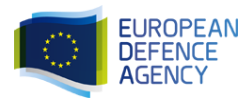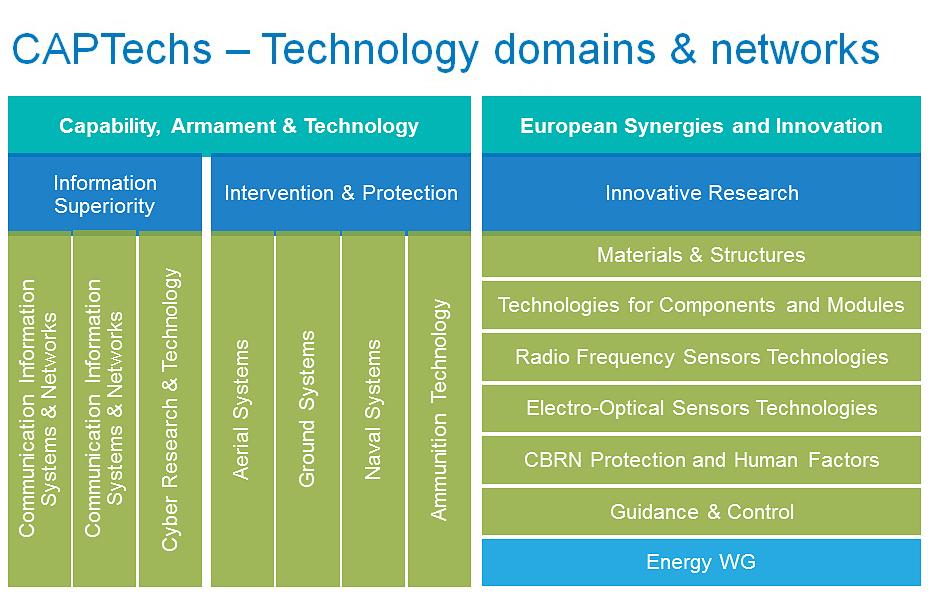European Defence Agency Launches Project to Test Feasibility of Additive Manufacturing in Europe’s Defense Sector
 We know that 3D printing is versatile and and extremely useful to many industries, including branches of the military. Marines are learning how to utilize the technology in order to solve problems on-site, the Pentagon is testing out attack mini-drones, and the US Army took part in an assessment earlier this year that included evaluating a 3D printing lab that was creating helpful parts like tread for their ground vehicles. But it’s not just benefiting America’s military: a leading Israeli defense contractor acquired a Roboze One+400 3D printer this year, and France’s Z3DLAB partnered with South Korea’s InssTek to 3D print military jet parts. Research & Markets’ Europe 3D Printing Market (2016-2022) report shows that 3D printing/additive manufacturing has had a huge impact on design, development, and manufacturing across the pond. Now, the European Defence Agency (EDA) is beginning a new project, to test the feasibility of additive manufacturing (AM) in the defense field in Europe. This innovative project was launched at the EDA kick-off meeting held last week.
We know that 3D printing is versatile and and extremely useful to many industries, including branches of the military. Marines are learning how to utilize the technology in order to solve problems on-site, the Pentagon is testing out attack mini-drones, and the US Army took part in an assessment earlier this year that included evaluating a 3D printing lab that was creating helpful parts like tread for their ground vehicles. But it’s not just benefiting America’s military: a leading Israeli defense contractor acquired a Roboze One+400 3D printer this year, and France’s Z3DLAB partnered with South Korea’s InssTek to 3D print military jet parts. Research & Markets’ Europe 3D Printing Market (2016-2022) report shows that 3D printing/additive manufacturing has had a huge impact on design, development, and manufacturing across the pond. Now, the European Defence Agency (EDA) is beginning a new project, to test the feasibility of additive manufacturing (AM) in the defense field in Europe. This innovative project was launched at the EDA kick-off meeting held last week.
The project objective is to “assess the areas where AM can have a positive impact on defence capabilities and to demonstrate its feasibility.” The project, named the Additive Manufacturing Feasibility Study & Technology Demonstration, was initiated within the EDA Research and Technology (R&T) domain, under the Capability Technology, or CapTech, group Materials and Structures, and will look at how the rise of additive manufacturing technologies has created all sorts of potential benefits for the defense community. Utilizing the technology in defense-specific areas can only happen once awareness has been raised, and a deeper understanding of the application of additive manufacturing is promoted through different military contexts.
 Two activities will be carried out under this initiative, the first being a desktop study “to place AM and its potential in a defence context.” The study plans to summarize the cutting edge abilities of additive manufacturing technologies, identify the existing R&T and manufacturing capabilities throughout Europe, and figure out the best places where further R&T activities should be carried out and studied.
Two activities will be carried out under this initiative, the first being a desktop study “to place AM and its potential in a defence context.” The study plans to summarize the cutting edge abilities of additive manufacturing technologies, identify the existing R&T and manufacturing capabilities throughout Europe, and figure out the best places where further R&T activities should be carried out and studied.
This project “represents a clear example of how cross-fertilization of ideas from different domains, from R&T to operations, will enhance defence capabilities, especially when supporting deployed missions.” The overarching goal is to show how R&T can contribute in terms of strengthening European cooperation and defense, specifically the European Defence Technological and Industrial Base (EDTIB). It is fundamental to the European Security and Defence Policy that a strong EDTIB is maintained – this is key to helping the EDA achieve its mission of improving the European Union’s (EU) defense capabilities. The EDTIB is a valuable economic asset, and supplies the majority of the equipment that Europe’s armed forces use. So it’s no wonder that the EDA wants to study how additive manufacturing can make a positive impact on Europe’s defense and security.
Once the project is complete, the results will be presented in exhibition form, with equipment and demonstrations, to high-ranking military staff, in an effort to continue raising awareness on the potential impact of additive manufacturing in the defense sector. The contractors that the EDA is using for the study, defense industry MBDA France and research center Fundación Prodintec, will work to support the project’s activities, and “help to create the synergies that will strengthen the links between research activities, industrial development, and the Armed Forces.” The meeting was attended not only by EDA staff, but also the European Commission, which notably gave €3.3 million in project funding earlier this year to the MESO-Brain consortium, which is focused on researching and developing 3D human neural networks that can interrogate real brain-like activity. Discuss in the AM Defense Study forum at 3DPB.com.
[Source: EDA]
Subscribe to Our Email Newsletter
Stay up-to-date on all the latest news from the 3D printing industry and receive information and offers from third party vendors.
You May Also Like
3D Printing Financials: Fathom Struggles in Financial Quicksand During Critical Transition
Facing a year of key transitions and financial pressures, Fathom (Nasdaq: FTHM) has filed its annual report for 2023 with the U.S. Securities and Exchange Commission (SEC). The document outlines...
Latest Earnings Overview for Australian 3D Printing Firms Titomic and AML3D
Australian 3D printing manufacturing firms Titomic (ASX: TTT) and AML3D (ASX: AL3) reported their financial results for the period from July to December 2023, marking the first half of their...
3D Printing Webinar and Event Roundup: April 7, 2024
Webinars and events in the 3D printing industry are picking back up this week! Sea-Air-Space is coming to Maryland, and SAE International is sponsoring a 3D Systems webinar about 3D...
3D Printing Financials: Unpacking Farsoon and BLT’s 2023 Performance
In the Chinese 3D printing industry, two companies, Farsoon (SHA: 688433) and Bright Laser Technologies, or BLT (SHA: 688333), have recently unveiled their full-year earnings for 2023. Farsoon reported increases...

































